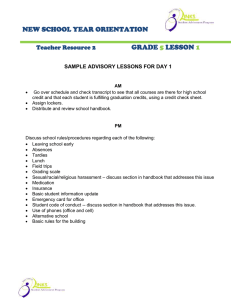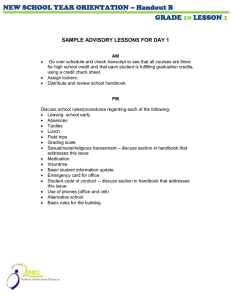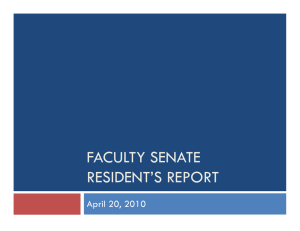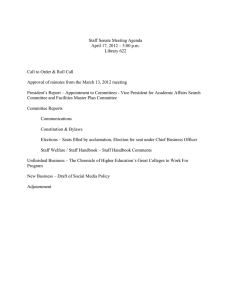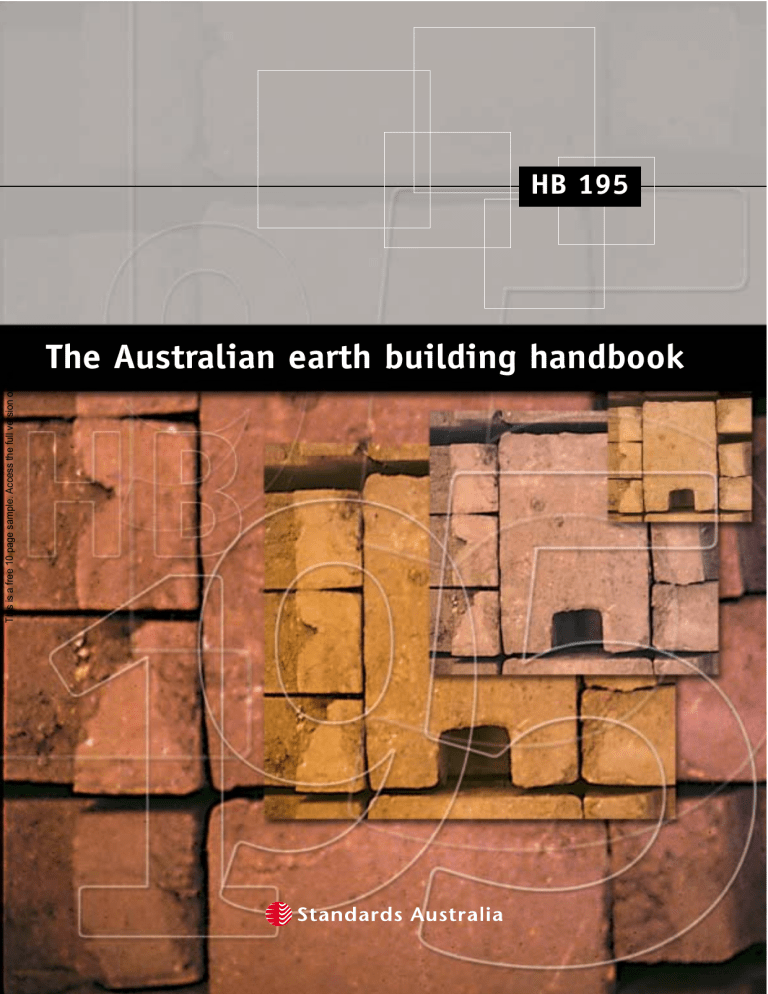
This is a free 10 page sample. Access the full version online.
HB 195
The Australian earth building handbook
This is a free 10 page sample. Access the full version online.
THE
AUSTRALIAN
EARTH BUILDING
HANDBOOK
by
Dr Peter Walker MIEAust, CPEng.
and
Standards Australia
This is a free 10 page sample. Access the full version online.
COPYRIGHT
© Standards Australia International
All rights are reserved. No part of this work may be reproduced or copied in any form or by any
means, electronic or mechanical, including photocopying, without the written permission of the
publisher.
Published by Standards Australia International Ltd
GPO Box 5420, Sydney, NSW 2001, Australia
ISBN 0 7337 4000 6
Preface
This Handbook was prepared jointly by Dr Peter Walker, University of Bath, and
Standards Australia. It sets out principles of accepted good practice and
recommended design guidelines for lightly loaded, primarily single and twostorey, buildings constructed using unbaked earthen walls and floors. Source
material for the Handbook has been taken from a variety of publications,
knowledge of accepted good practice, results of recent research and development
work, and out of the work of Committee BD-083, Earth Building.
This is a free 10 page sample. Access the full version online.
Whilst some contents of this Handbook are derived from the work of Standards
Australia Committee BD-083, the Handbook has not been published under the
auspices of the committee, and therefore it should not be taken as representative
of the views of committee members. However, thanks are due to those committee
members and others who contributed their views, in particular Stephen Dobson,
David Baetge, Kevan Heathcote, Chris Howe (EBAA) and David Oliver.
Throughout the Handbook reference is made to a number of Australian Standards,
and extracts taken from AS 2870 and AS 3700 are included. Readers are,
therefore, advised to consult the latest edition of the Standard or referenced
material.
The contents of this Handbook will be kept under regular review. Any comments
from readers on how it may be improved would be most welcome.
i
This is a free 10 page sample. Access the full version online.
This page left blank intentionally.
ii
Contents
This is a free 10 page sample. Access the full version online.
CHAPTER 1 INTRODUCTION
1.1 Scope of Handbook
1
1.2 History
2
1.3 Why earth construction?
1.3.1 Advantages
1.3.2 Limitations
8
8
11
1.4 Forms of construction
1.4.1 Loadbearing wall construction
1.4.2 Post and beam construction
12
12
13
1.5 Passive solar design
14
1.6 Definitions
16
CHAPTER 2 EARTH BUILDING MATERIALS AND TECHNIQUES
2.1 Materials
2.1.1 Soils
2.1.2 Stabilisation
2.1.3 Water
2.1.4 Soil suitability
21
21
24
26
26
2.2 Mud brick construction
2.2.1 Scope
2.2.2 Materials
2.2.3 Manufacture
2.2.4 Construction
2.2.5 Characteristics
30
31
31
32
34
35
2.3 Pressed earth block construction
2.3.1 Scope
2.3.2 Materials
2.3.3 Block manufacture
2.3.4 Construction
2.3.5 Characteristics
36
36
36
37
39
40
2.4 Rammed earth construction
2.4.1 Materials
2.4.2 Formwork
2.4.3 Construction
2.4.4 Characteristics
40
41
41
44
45
2.5 Other forms of earth wall construction
2.5.1 Poured-earth construction
2.5.2 Cob construction
45
46
48
iii
Contents
This is a free 10 page sample. Access the full version online.
CHAPTER 3 DETAILING, CONSTRUCTION AND MAINTENANCE
3.1 Wall layout
3.1.1 Openings
3.1.2 Design for earthquakes
3.1.3 Provision for wall movement
51
51
52
53
3.2 Protective coatings
3.2.1 General
3.2.2 Function and form
3.2.3 Surface coatings
3.2.4 Renders
3.2.5 Cladding and facing
55
55
56
57
58
59
3.3 Damp proofing
60
3.4 Termite protection
62
3.5 Earth floors
64
3.6 Lintels
3.6.1 General
3.6.2 Earth lintels
3.6.3 Reinforced concrete lintels
3.6.4 Steel lintels
3.6.5 Timber lintels
65
65
68
70
70
72
3.7 Top plates and bond beams
3.7.1 Function
3.7.2 Timber top plates
3.7.3 Reinforced concrete bond beams
72
72
73
73
3.8 Services
74
3.9 Door and window frame fixings
76
3.10 Non-structural wall fixings
76
3.11 Fireplaces
78
3.12 Quality of work
3.12.1 General considerations
3.12.2 Materials
3.12.3 Quality of construction
3.12.4 Tolerances
3.12.5 Compliance testing
78
78
78
79
84
84
3.13 Maintenance and repair
3.13.1 Maintenance
3.13.2 Repairs
85
85
87
iv
Contents
This is a free 10 page sample. Access the full version online.
CHAPTER 4 DESIGN OF EARTH BUILDINGS
4.1 Performance requirements
91
4.2 Durability
4.2.1 Durability testing of materials
4.2.2 General design considerations
4.2.3 Eaves projection
4.2.4 Footing detail
91
92
94
95
96
4.3 Design properties and general considerations
4.3.1 Design properties
4.3.2 Other earth building components
4.3.3 Dimensions and cross-section properties
4.3.4 Structural Adequacy
4.3.5 Control joints
4.3.6 Design for seismic loading
97
97
99
99
100
101
101
4.4 Unreinforced earth walls
4.4.1 Scope of section
4.4.2 Design for combined compression and bending
4.4.3 Concentrated compression loads
4.4.4 Out-of-plane flexural capacity of walls
4.4.5 Design for shear
4.4.6 Torsion
101
101
102
103
104
105
105
4.5 Reinforced earth walls
4.5.1 Materials
4.5.2 Form of construction
4.5.3 Design and detailing of embedded reinforcement
4.5.4 Design of holding-down bolts for top plates
4.5.5 Anchorage bond strength in rammed earth
106
106
107
108
109
111
4.6 Fire resistance level
112
CHAPTER 5 FOOTINGS FOR EARTH BUILDINGS
5.1 AS 2870 Standard solutions
5.1.1 Scope
5.1.2 Materials
5.1.3 Site classification
5.1.4 Deemed-to-comply standard solutions
113
113
113
113
114
5.2 Detailing and construction
5.2.1 Site preparation
5.2.2 Drainage
5.2.3 Damp proofing
5.2.4 Reinforcement detailing
5.2.5 Articulation joints
5.2.6 Concreting
5.2.7 Foundation maintenance
118
118
119
119
120
121
121
121
v
Contents
5.3 Stabilised earth footings
5.3.1 Suitability
5.3.2 Materials
5.3.3 Footing design
5.3.4 Construction
122
122
123
123
123
CHAPTER 6 FUTURE OF EARTH BUILDING
125
REFERENCES
127
This is a free 10 page sample. Access the full version online.
APPENDIX A MATERIAL TESTING
A1 Soil testing
A1.1 Sampling
A1.2 Sensory testing
A1.3 Ribbon test
A1.4 Dry strength test
A1.5 Sedimentation test
A1.6 Shrinkage test
A1.7 Drop test
131
131
131
132
132
133
133
134
A2 Samples for compliance testing
A2.1 Individual units
A2.2 In situ cast walls
136
136
136
A3 Field tests
A3.1 Dry density
A3.2 Water absorption
A3.3 Strength assessment
A3.4 Robustness assessment
A3.5 Durability assessment
137
137
137
138
140
141
A4 Laboratory testing of earth building materials
A4.1 Dry density
A4.2 Water absorption
A4.3 Compressive strength
A4.4 Bending strength
A4.5 Accelerated erosion test
A4 6 Earth wall compressive strength test
A4 7 Earth masonry bending strength by bond wrench test
144
144
144
145
146
147
149
149
A5 Statistical analysis
151
vi
Chapter 1— Introduction
CHAPTER 1
INTRODUCTION
1.1 SCOPE OF HANDBOOK
This is a free 10 page sample. Access the full version online.
This Handbook sets out principles of accepted good practice and
recommended design guidelines for lightly loaded buildings built using
unbaked earthen walls and floors. Provisions set out in this Handbook are
primarily, but not exclusively, intended for single- or two-storey earth
wall construction. The Handbook is not a comprehensive treatise on earth
wall construction technology.
The guidance given is the culmination of a long and successful history of
Australian earth wall construction. The Handbook seeks to promote
continuity of this innovative tradition and encourage alternative solutions
wherever possible. Therefore, in addition to the recommendations set out
below, satisfactory construction may be demonstrated by precedence (with
a verified service history), shown by experimental verification, or proven
in accordance with rational design methods following accepted principles
and undertaken by suitably qualified and experienced professionals.
Guidance on material selection, preparation and use is outlined in
Chapter 2 of the Handbook. Earth walling covers a wide range of
techniques, including masonry and monolithic forms of construction,
which are also described in Chapter 2. Chapter 3 sets out
recommendations for proven construction details for earth walls and
floors. Measures for maintenance and repair are also provided. Design of
earth walls covering durability and strength, together with deemed-tocomply provisions based on accepted best practice, are given in Chapter 4.
Standard footing solutions for earth buildings are detailed in Chapter 5.
These include solutions taken from AS 2870 [1], and proposals for earthen
footings as well. Appendix A sets out standard test procedures for
stabilised earthen materials and components. Deemed to comply solutions
set out are restricted to design category A1 or H2 domestic structure for
earthquake design and buildings in areas where the design wind speed
does not exceed W41 [37].
The Handbook has been written primarily for a professional readership,
including architects, builders, engineers and building inspectors. Whilst
some parts of the Handbook, Chapter 4 for example, require an
understanding of basic engineering principles, the Handbook is also
intended to be accessible to a more general readership, including the
owner-builder.
1
This is a free preview. Purchase the entire publication at the link below:
This is a free 10 page sample. Access the full version online.
HB 195-2002 The Australian Earth Building
Handbook
Looking for additional Standards? Visit SAI Global Infostore
Subscribe to our Free Newsletters about Australian Standards® in Legislation; ISO, IEC, BSI and more
Do you need to Manage Standards Collections Online?
Learn about LexConnect, All Jurisdictions, Standards referenced in Australian legislation
Do you want to know when a Standard has changed?
Want to become an SAI Global Standards Sales Affiliate?
Learn about other SAI Global Services:
LOGICOM Military Parts and Supplier Database
Metals Infobase Database of Metal Grades, Standards and Manufacturers
Materials Infobase Database of Materials, Standards and Suppliers
Database of European Law, CELEX and Court Decisions
Need to speak with a Customer Service Representative - Contact Us

